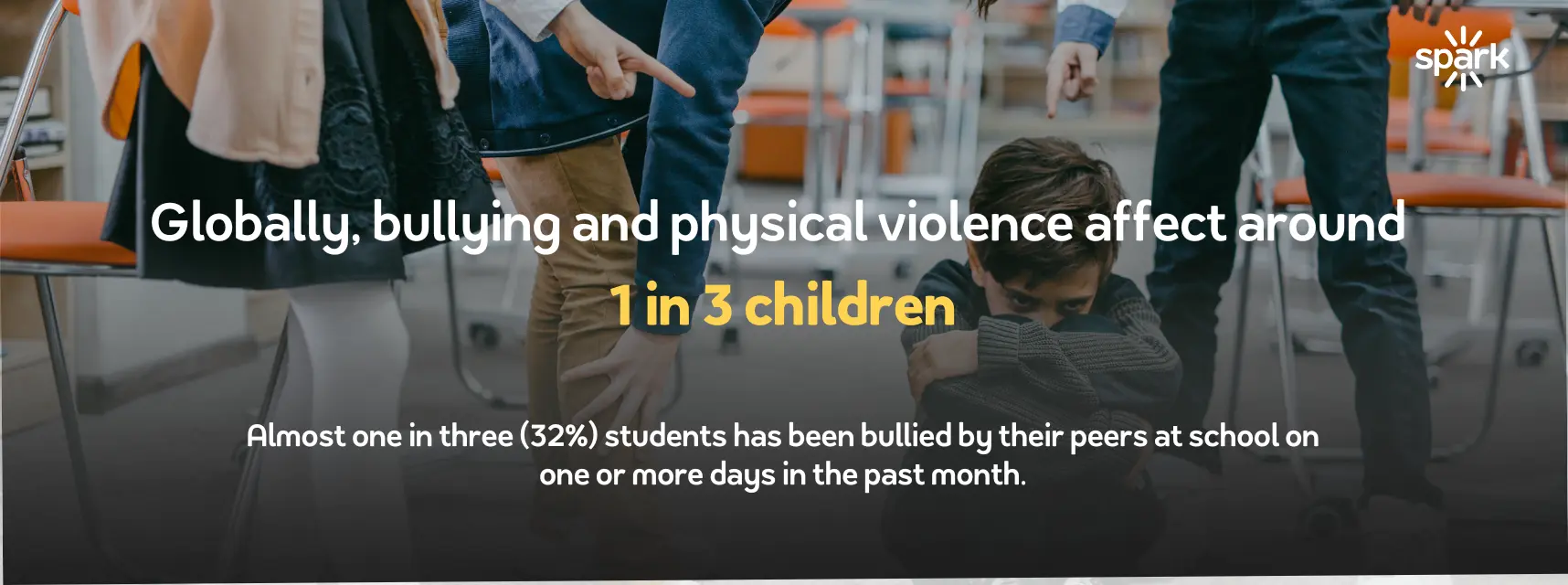Understanding the Impact of Community Involvement on the High School Environment
Community Involvement in high schools, as we discussed in one of our previous blogs, is a must. That is, if we want to create a welcoming environment for students, parents, and faculty.
If we were to give it a definition, community involvement in high school means letting down the barriers of the classrooms and inviting the community into the school.
This works great to create a more engaging learning environment to engage students and members of their community to work together for common educational goals.
Some examples of community involvement in schools can be:
- Volunteering activities in or outside of school with support from the community
- Workshops organised by local experts from the community
- Internships or Mentoring Sessions hosted by experts from the local community
- Open-day events for families and friends
- School visits from local experts or field trips to local businesses and organisations
The benefits of community involvement in high school:
Some benefits of community involvement in high school are easier to observe than others. Good relationships between the local community and the high school can result in more opportunities for students.
These opportunities are essential for students to develop life-lasting connections and skills that will later help them in their careers and lives.
More benefits:
- Improved Student Performance Rates
- Improved Rates of Student Attendance
- Improvements in General Student Behaviour
- Improved Relationships between students, parents, faculty and local community
- Overall decrease in school dropout rates
Bullying in High Schools:
Now that we have finished the recap on community involvement in high schools and its benefits, let’s dive into the other important topic of today’s blog post – bullying in high schools.
Bullying can be described as unwanted, humiliating, aggressive or hostile behaviour performed by a student or group of students towards another student.
Bullying can happen just 1 time, or it can happen repeatedly. Nevertheless, the impact of bullying on students is equally damaging, no matter how often it happens.

(Statistics Source: UNESCO 2018, School violence and bullying: Global status and trends, drivers and consequences)
According to UNESCO’s 2018 Report on School Violence and Bullying, around 1 in 3 children are affected by bullying and physical violence around the world.
So, how does bullying affect students in high school?
Here are just some of the consequences that bullying can have on students:
- Emotional and Psychological Impact: Bullying causes fear, anxiety, and lowered self-esteem among students.
- Drop in Academic Performance: Bullying can lead to decreased focus, absenteeism, and a decline in grades due to the student having a more important preoccupation – surviving.
- Physical Health: Students may experience headaches, stomachaches, and sleep disturbances due to bullying.
- Social Relationships: Bullying often results in social withdrawal and difficulties in forming relationships with peers, faculty, or one’s family.
- Long-Term Consequences: Effects of bullying can persist and carry on into the future of a student, influencing mental health and future life choices.
These are just some of the consequences we decided to list for a better understanding of how badly bullying can affect students.
Reactions can vary from student to student, but families, school faculty and peers should be aware of some signs that might point to a case of bullying.
Bullying in Online High Schools (or Cyberbullying)
The phenomenon of cyberbullying is just another form of bullying, adapted to our current days filled with technology. When bullying moves to the online environment, it’s called Cyberbullying.
Cyberbullying can mean that someone is harassing you through the internet, be that with unwanted messages, media types, or friend requests, in an insistent manner.
And it can become just as damaging as offline bullying if things get out of control.
In a Survey conducted by the Cyberbullying Research Centre, studies have found that around 37% of students have experienced cyberbullying at least once in their lives. (United States-based survey)
When it comes to the medium where cyberbullying happens, reports show that children aged 9 to 10 are more likely to be targets of bullying on gaming websites.
Teens aged 13 to 16 are more likely to be affected by cyberbullying on social media or online. So, how can we stop bullying from happening – online or offline?
How Community Involvement Can Help Combat Bullying
Promoting a Supportive Environment:
An engaged community forms the backbone of a supportive high school environment, fostering safety and unity among students.
Community-driven initiatives like mentorship programs and inclusive events have shown remarkable success in reducing bullying incidents and creating a culture of respect and acceptance between members of the same community.
Cultivating Healthy Relationships
A successful School-community relationship should foster valuable connections between students and members of the community.
This is a benefit for students, as they are not limited to family or school faculty when it comes to asking for help, advice, or needing someone to trust.
Empowering Students and Staff:
Active community involvement empowers students and staff to become proactive against bullying, fostering a sense of ownership and responsibility for one another’s wellbeing.
These initiatives equip individuals with the tools and confidence needed to address and prevent bullying effectively in or outside the school ”yard”.
How schools can prevent bullying from happening
- Anti-bullying policies and guidelines
- Schools can establish strict guidelines and protocols that clearly define bullying behaviours and consequences, ensuring everyone understands the zero-tolerance approach.
- Raising awareness
- Although it might seem like everyone is very familiar with the topic, this isn’t the case. Promoting awareness and education among students, staff, and parents is crucial.
- Engaging workshops, assemblies, and educational programs on empathy and conflict resolution spark interest and equip students, families, and faculty with tools to recognise, address, and prevent bullying instances.
- The role of trust in preventing bullying in schools
- Creating a supportive environment where students feel comfortable reporting bullying incidents without fear of reprisal is essential.
- Schools should establish confidential reporting systems, encourage open dialogue, and provide counselling services, fostering reassurance in students who need to seek help and support.
How is it done in your high school?
At Spark, our students’ wellbeing is our number one priority, and we have a zero-tolerance policy on bullying.
We not only have a Wellbeing program to promote healthy relationships between students, their families, and our faculty, but we also have a Safeguarding policy in place to protect the wellbeing of our students and community.
We love to think that relationships can also be nurtured, just like knowledge. So why not nurture them both?
Let’s put an end to bullying. Together!
One of our goals as an educational institution providing students with a holistic education is to have them graduate from Spark as healthy and happy individuals, ready to face any challenge that life throws at them.
☎️If you want to be part of an inclusive community that looks out for your well-being, we’d love to hear from you!
Let’s Spark that change in education and be part of the generation that breaks the cycle and says stop to bullying.
❓FAQ: Reducing High School Bullying Through Community Involvement
1: Why is community involvement in high schools crucial for reducing bullying?
Community involvement creates a supportive culture, engaging students and local groups in initiatives that decrease bullying incidents and build unity.
2: What are some consequences of bullying in high schools, both offline and online?
Bullying causes emotional distress, academic decline, and health issues, while cyberbullying, prevalent on social media or digital platforms, can have similar effects.
3: How can online high schools like Spark effectively prevent bullying from occurring?
Online high schools can prevent bullying by implementing anti-bullying policies, raising awareness and keeping in touch with families, fostering a trusting environment, and encouraging proactive student involvement in inclusive activities.




